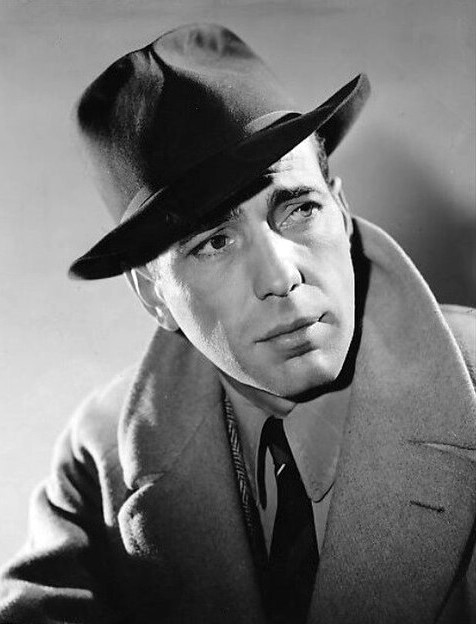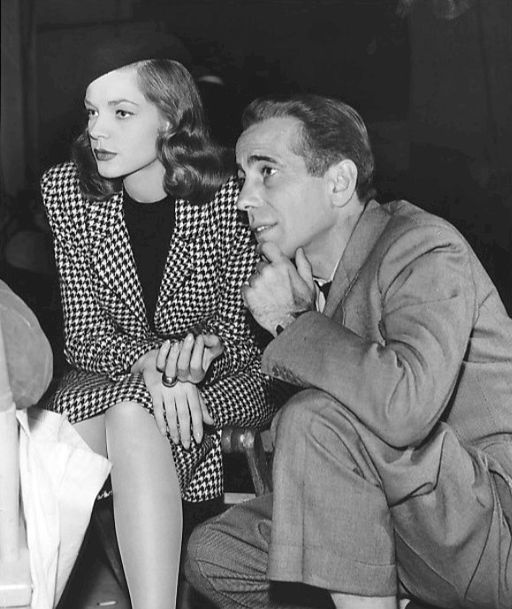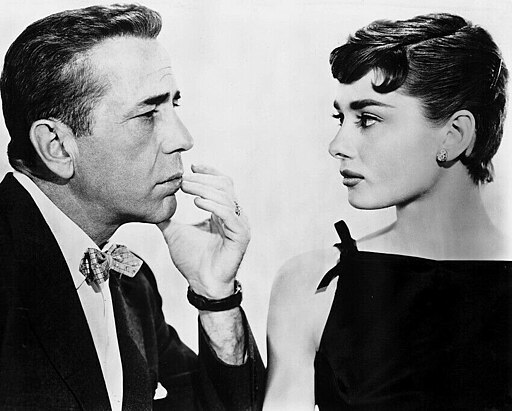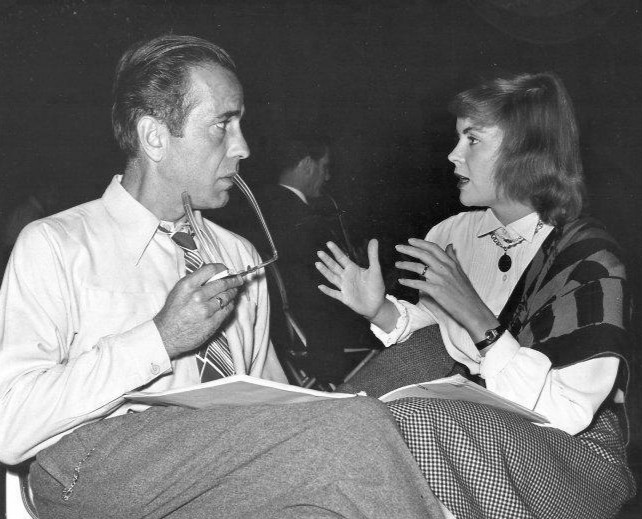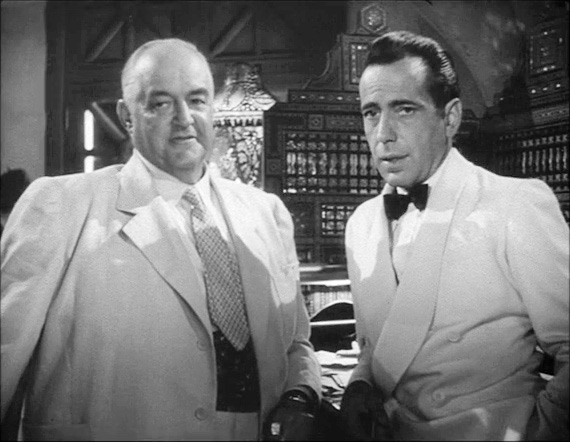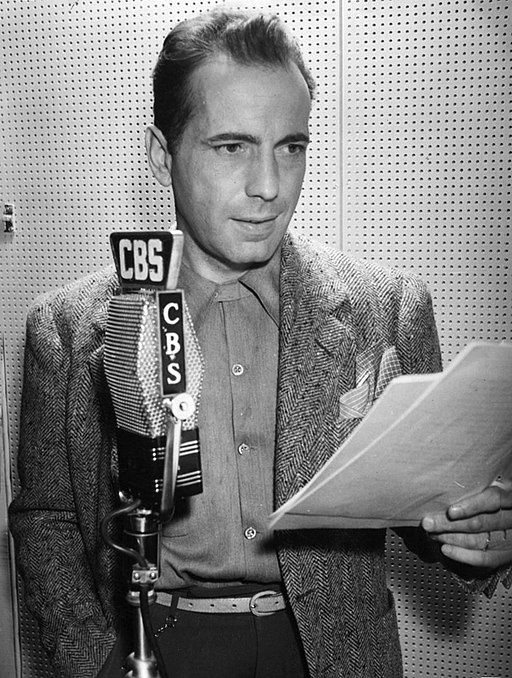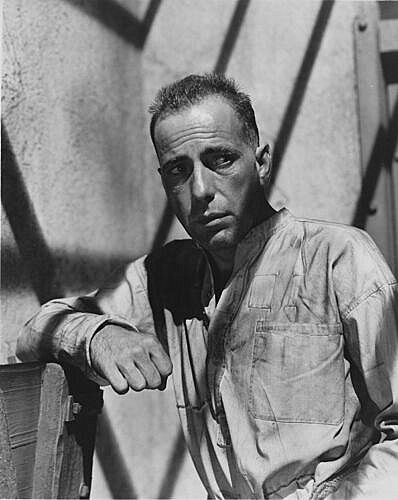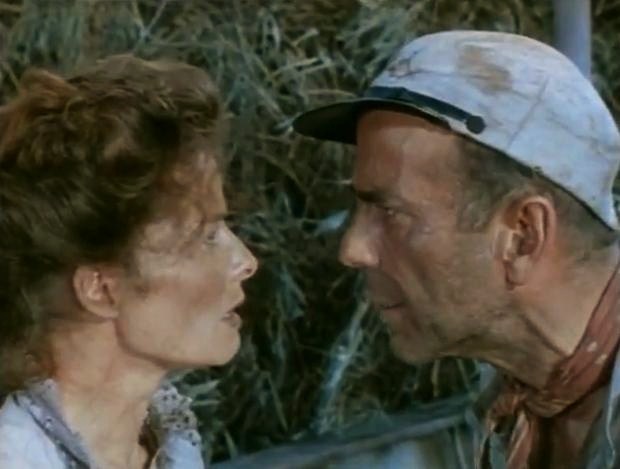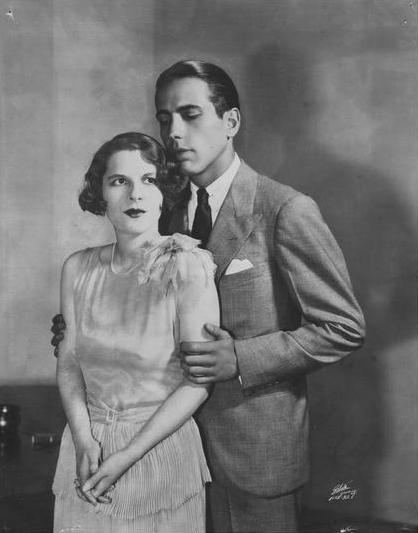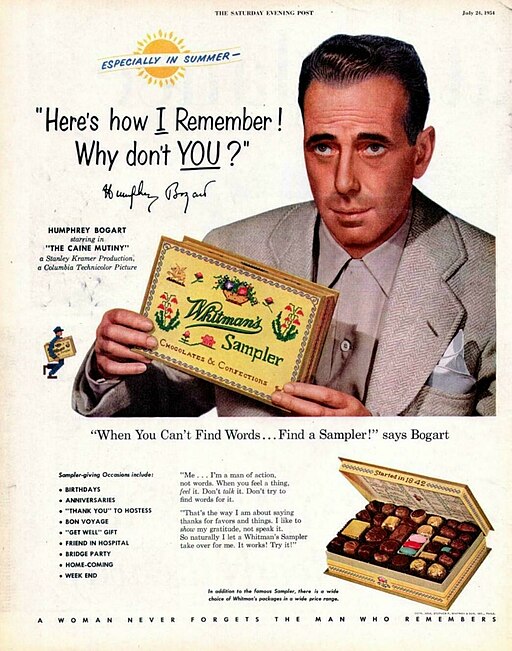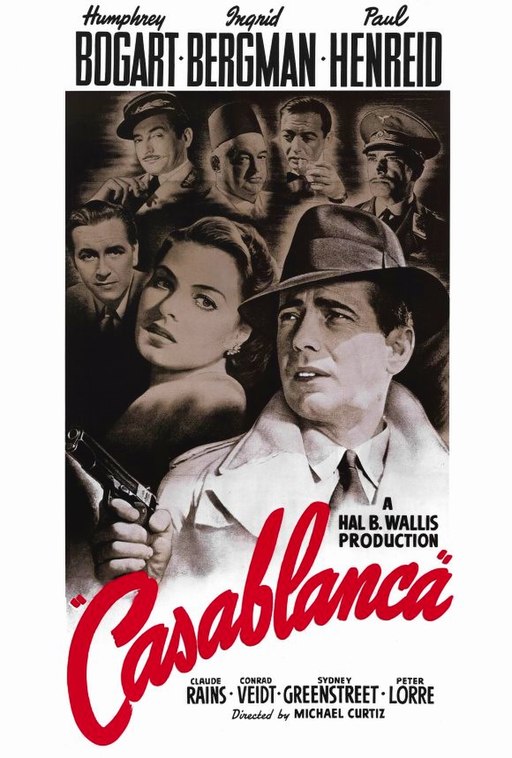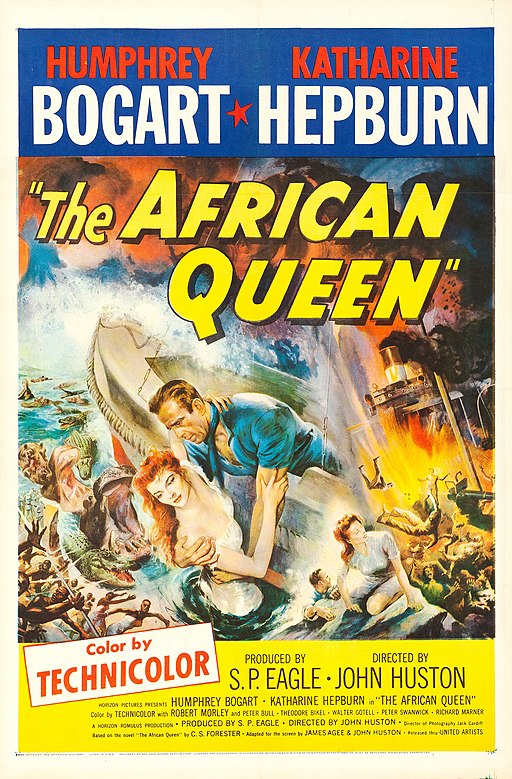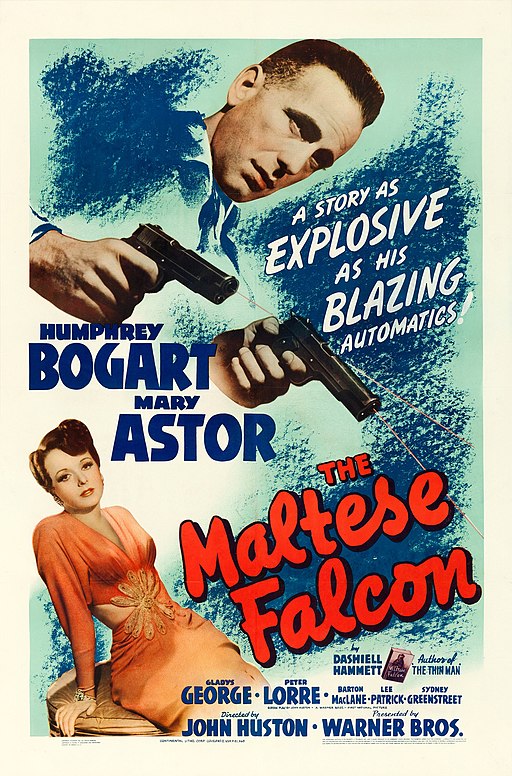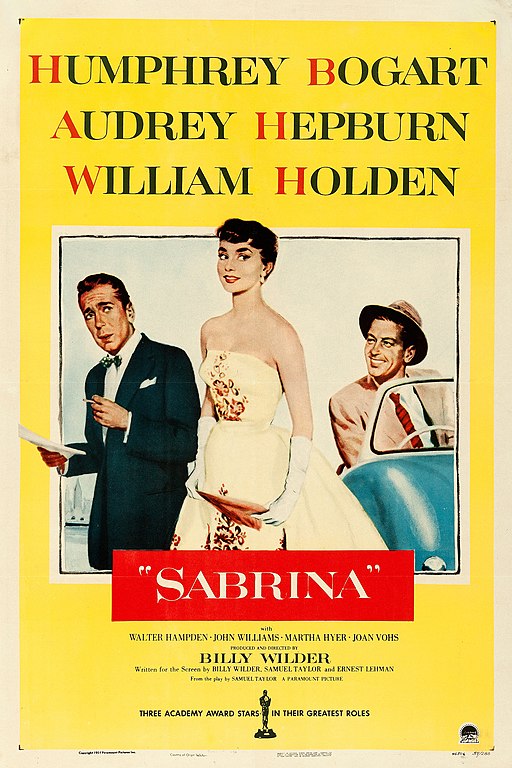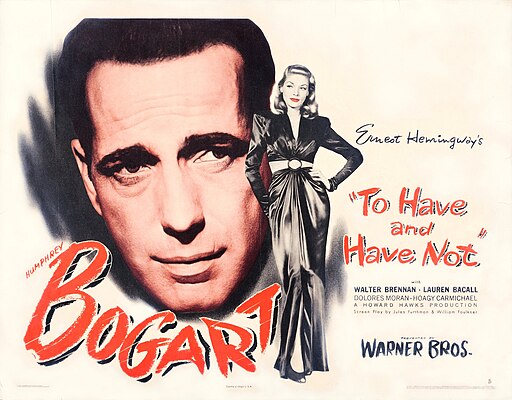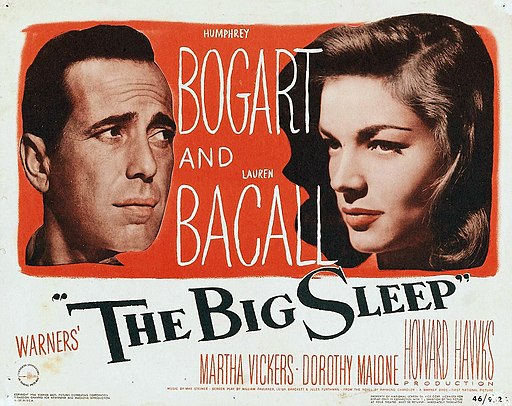Humphrey Bogart
back| Full Name | Humphrey DeForest Bogart |
| Stage Name | Humphrey Bogart |
| Born | December 25, 1899 |
| Birthplace | New York City, U.S. |
| Died | January 14, 1957 |
| Buried | Forest Lawn Memorial Park, Glendale, California, U.S. |
| Married to | Helen Menken (1926–1927) - Mary Philips (1928–1937) - Mayo Methot (1938–1945) - Lauren Bacall (1945–1957, his death) |
| Children | Stephen Humphrey Bogart (with Lauren Bacall) - Leslie Bogart (with Lauren Bacall) |
| Notable films | The Maltese Falcon (1941) - Casablanca (1942) - To Have and Have Not (1944) - The Big Sleep (1946) - Key Largo (1948) - The African Queen (1951) |
Humphrey Bogart
“Bogie”, the Man of Toughness and Understated Charisma
Humphrey Bogart emerged as one of Hollywood's most enduring stars. Starting in theater, Bogart transitioned to film in the 1930s, gaining recognition with his breakthrough role as Sam Spade in "The Maltese Falcon" (1941).
His portrayal of Rick Blaine in "Casablanca" (1942) further cemented his status as a leading man, known for his distinctive voice and rugged demeanor. Bogart's talent for playing complex, brooding characters shone in classics like "The Big Sleep" (1946) and "The African Queen" (1951), for which he won an Oscar.
Related
Humphrey Bogart (1899 – 1957)
Biography and Analysis of his Acting Career
Born on Christmas Day, 1899, in a wealthy and cultured family in New York City, Humphrey DeForest Bogart was the eldest child of Dr. Belmont DeForest Bogart and Maud Humphrey. His father was a well-respected surgeon, and his mother was a commercially successful illustrator. Raised in the affluent environment of New York's Upper West Side, Bogart's early life was one of privilege, but not without its strictures and expectations.
Education: Bogart attended Trinity School in New York City, and later, the prestigious Phillips Academy in Andover, Massachusetts, where he was known for his rebellious attitude. This non-conformity eventually led to his expulsion, a setback that began a period of uncertainty and restlessness in his young life.
Navy Experience: During World War I, Bogart enlisted in the U.S. Navy, where he served with some distinction. It is said that a scar on his upper lip, a trademark of his later rugged appearance, was a result of an injury sustained during his naval service.
Entry into Acting: Post-war, Bogart's career path was uncertain. His family's connections in the theater world led him to the stage. He started with menial jobs behind the scenes before making his way to the stage for minor roles. Bogart's early acting career was a mix of persistence and struggle, marked by a gradual recognition of his unique qualities as an actor.
Rise to Prominence: Bogart's film career started in the 1930s, but it wasn't until the 1940s that he found true stardom. His portrayal of Sam Spade in "The Maltese Falcon" (1941) was a turning point, showcasing his capacity for complex, gritty characters.
Iconic Roles: Following this, Bogart delivered a string of memorable performances. In "Casablanca" (1942), he immortalized the role of Rick Blaine, and in "The African Queen" (1951), his portrayal of Charlie Allnut earned him an Academy Award. These roles, among others, solidified his place as a Hollywood legend.
Marriages and Family:
- Helen Menken (1926-1927): His first marriage was short-lived.
- Mary Philips (1928-1937): A more stable period, but it ended as Bogart's career took off.
- Mayo Methot (1938-1945): This turbulent relationship was marked by alcohol and arguments.
- Lauren Bacall (1945-1957): His marriage to Bacall was both a romantic and professional partnership, producing two children and several classic films.
Interests: Beyond acting, Bogart was passionate about sailing, a hobby that provided him with a sense of freedom and escape. He was also an avid chess player and a vocal opponent of the Hollywood blacklist, showcasing his intellectual and principled sides.
Health Decline: Bogart's robust health began to decline in the mid-1950s. Diagnosed with esophageal cancer, he battled the disease bravely but ultimately succumbed to it.
Death: Bogart died on January 14, 1957, leaving behind a legacy that transcended his life. His passing was not just the loss of a great actor but the end of an era in American cinema.
Legacy: Known for his distinctive voice, demeanor, and roles that often portrayed complex, morally ambiguous characters, Bogart's impact on the film industry and popular culture remains enduring. His performances continue to be celebrated for their depth, authenticity, and enduring appeal.
Video: How Humphrey Bogart became a Legend:
Analysis of Humphrey Bogart’s Acting Style:
Humphrey Bogart's acting style is a fascinating study in the art of cinema. His approach was marked by a unique blend of naturalism, intensity, and subtlety, which made him one of the most iconic figures in Hollywood's Golden Age.
Subtlety and Restraint: Bogart's style was characterized by a remarkable understatement. He had a way of conveying deep emotions with minimal expression, relying on subtle facial movements and a slight change in tone. This restraint lent a sense of realism and authenticity to his performances, making his characters relatable and human.
Realistic Dialogue Delivery: Bogart had a distinctive, slightly lisping voice, which he used to great effect. His delivery was often clipped and direct, mirroring the way real people speak. This naturalistic dialogue delivery was particularly noticeable in his noir films, where his lines were delivered with a cynical and world-weary cadence.
The Hard-Boiled Character: Bogart is best known for his "tough guy" roles. He had a knack for playing hard-edged, cynical characters with a hidden vulnerability. This was evident in films like "The Maltese Falcon" and "Casablanca," where his characters, while tough and shrewd, also showed moments of tenderness and moral complexity.
Physicality: His physical presence on screen was understated yet commanding. He wasn't a traditionally handsome leading man; his appeal lay in his rugged features and a certain weariness that suggested a life lived hard. This physicality added a layer of depth to his portrayal of world-weary characters.
Portrayal of Vulnerability: Behind the tough exterior of his characters, Bogart had a unique ability to reveal vulnerability and inner conflict. This depth made his characters multi-dimensional and often sympathetic, even when they were morally ambiguous.
Chemistry with Co-stars: His scenes with his female co-stars, particularly with Lauren Bacall, displayed a combination of toughness and tenderness. This chemistry added an emotional complexity to his roles and made his romantic scenes deeply compelling.
Versatility: While known for noir and crime dramas, Bogart also excelled in other genres, including romance, comedy, and adventure. His performance in "The African Queen" demonstrates his ability to adapt his style to different genres, bringing the same level of depth and authenticity to a more lighthearted role.
Legacy
Bogart's acting style was not just a product of his era; it has had a lasting impact on the art of film acting. He brought a sense of realism and complexity to his roles that was ahead of his time. His performances remain benchmarks for actors seeking to convey authenticity and emotional depth.
Trivia:
A] Humphrey Bogart’s Hat:
Humphrey Bogart is often associated with a specific style of hat that became iconic through his film roles, particularly in film noir and detective movies. This hat is the classic Fedora, a symbol of his on-screen persona.
Characteristics of Bogart's Fedora:
- Shape: The Fedora typically has a wide brim, pinched sides, and a lengthwise crease down the crown. Bogart's Fedora often had these classic features, but with a slightly more rugged and worn look, complementing his tough-guy roles.
- Material: Traditionally made from felt, the Fedora provided both style and practicality, suitable for the various settings of his films.
- Color: While Fedoras can come in various colors, Bogart's were typically in shades of gray or brown, contributing to the gritty, noir aesthetic of his movies.
Significance in Bogart's Persona:
- Iconic Accessory: The Fedora became synonymous with Bogart's film characters, particularly detectives and hard-boiled heroes. It accentuated his rugged features and added to the mysterious, enigmatic aura of his characters.
- Symbolism: In the context of film noir, the Fedora symbolized masculinity, mystery, and a sense of brooding introspection. It became a key element in the visual language of the genre.
- Fashion Influence: Bogart's use of the Fedora influenced men's fashion, making it a popular style beyond the silver screen. It became a symbol of sophistication and toughness, much like Bogart's own screen image.
B] Bogart’s Height and Weight:
Humphrey Bogart was known for his distinctive screen presence, which often gave the impression of a larger-than-life character. In reality, he was not particularly tall. Bogart's height was approximately 5 feet 8 inches (173 cm). This stature, considered average, was a contrast to the tough, commanding characters he often portrayed on screen.
Regarding his weight, while specific figures vary over the years, Bogart was generally of a slim build. His lean physique contributed to his sharp, distinctive appearance, particularly in the tailored suits that were a staple of his wardrobe in many of his films.
Humphrey Bogart receiving the Oscar for Best Actor in 1952:
Memorable Film Quotes from Humphrey Bogart:
Humphrey Bogart, with his iconic roles in classic films, left behind a treasure trove of memorable quotes. Some of these lines have become ingrained in popular culture and are often cited for their wit, poignancy, and timeless appeal. Here are some of Bogart's most memorable quotes from his films:
"Here's looking at you, kid." - "Casablanca" (1942)
One of the most famous lines in movie history, this quote encapsulates the tender yet complicated relationship between Bogart's character, Rick Blaine, and Ilsa Lund, played by Ingrid Bergman.
"The stuff that dreams are made of." - "The Maltese Falcon" (1941)
As Sam Spade, Bogart delivers this line at the end of the film, referencing the elusive statuette that drives the movie's plot. It's a nod to the illusory nature of the characters' pursuits.
"You know how to whistle, don't you, Steve? You just put your lips together and... blow." - "To Have and Have Not" (1944)
Though spoken by Lauren Bacall to Bogart's character, Harry Morgan, this line is iconic for their on-screen chemistry and is often associated with both actors.
"Of all the gin joints in all the towns in all the world, she walks into mine." - "Casablanca" (1942)
As Rick Blaine, Bogart delivers this line when Ilsa enters his nightclub in Casablanca, encapsulating the sense of fate and lost love that permeates the film.
"Louis, I think this is the beginning of a beautiful friendship." - "Casablanca" (1942)
The final line of "Casablanca," spoken to Claude Rains' character, Captain Louis Renault, signifies a turning point in Rick's character and his outlook on life.
"I stick my neck out for nobody." - "Casablanca" (1942)
This line sums up Rick's initially cynical and detached persona, reflecting his reluctance to involve himself in others' affairs, a stance that changes as the film progresses.
"We'll always have Paris." - "Casablanca" (1942)
A line that speaks to nostalgia and lost love, as Rick reminisces about his time with Ilsa in Paris before the war.
"You're good. You're very good." - "The Maltese Falcon" (1941)
As Sam Spade, Bogart delivers this line with a mix of admiration and skepticism, characteristic of his guarded, discerning characters.
Memorable Personal Quotes from Humphrey Bogart:
- On Acting: "Acting is experience with something sweet behind it."
- On Life and Success: "The only thing that you owe the public is a good performance."
- Reflecting His Tough Guy Image: "I'm not good-looking. I used to be, but not anymore. Not like Rock Hudson or Robert Redford. But I'm good at projecting sincerity, which is just as well, because I am sincere."
- On Hollywood: "Hollywood's a great place to live... if you're a grapefruit."
- Philosophical Outlook: "A hot dog at the ballgame beats roast beef at the Ritz."
- On Personal Integrity: "The problem with the world is that everyone is a few drinks behind."
- On His Craft: "I can't say I ever loved my mother, I admired her."
- Reflecting on Fame: "I don't hurt the industry. The industry hurts itself, by making so many lousy movies—as if General Motors deliberately put out a bad car."
Significance of his Performance in The Maltese Falcon:
"The Maltese Falcon," released in 1941, holds a place of tremendous significance in the career of Humphrey Bogart, marking a pivotal turning point and establishing him as a leading man in Hollywood. The film's impact on his career can be examined through several key aspects:
Breakthrough Role
- Defining Character: Bogart's portrayal of the hard-boiled private detective Sam Spade became a defining moment in his career. Prior to this film, he had mostly been cast in supporting roles, often playing gangsters or villains. Sam Spade, with his complex mix of cynicism, moral ambiguity, and a tough exterior, offered Bogart a chance to showcase his range and depth as an actor.
Establishing the Film Noir Genre
- Film Noir Pioneer: "The Maltese Falcon" is often considered one of the earliest examples of the film noir genre. Bogart's performance set the standard for the noir hero – a character type that he would become synonymous with. His portrayal influenced the style and tone of noir protagonists for decades to follow.
Collaboration with John Huston
- Director-Actor Partnership: The film marked the first collaboration between Bogart and director John Huston, a partnership that would prove fruitful for both. Huston understood how to utilize Bogart's strengths, and their collaboration led to other successful films like "The Treasure of the Sierra Madre" and "Key Largo."
Critical and Commercial Success
- Box Office Hit: The film was a commercial success and received critical acclaim, further cementing Bogart's rising star status. It demonstrated that he could carry a film as the lead actor, significantly boosting his career and leading to more starring roles.
Typecasting and Beyond
- Typecasting as a Tough Guy: While the role of Sam Spade typecast Bogart to an extent, as a tough, morally ambiguous character, it also opened doors to a variety of roles within that archetype. He skillfully used this persona to his advantage in subsequent films, while also showing versatility in different genres.
Legacy and Iconic Status
- Iconic Status: "The Maltese Falcon" contributed significantly to Bogart becoming an icon of American cinema. The film's enduring popularity has kept Bogart's performance in the public consciousness, cementing his legacy as one of the greatest actors of the 20th century.
In summary, "The Maltese Falcon" was more than just a successful film in Humphrey Bogart's career; it was the catalyst that transformed him from a typecast supporting actor into a leading man and a cinematic icon, setting the tone for the noir genre and shaping the trajectory of his future roles.
Awards and Recognition:
Academy Awards (Oscars)
- 1944: Nominated for Best Actor for "Casablanca."
- 1952: Won the Best Actor award for his role in "The African Queen." This was a significant win, as it acknowledged his remarkable portrayal of Charlie Allnut, a rough-hewn but endearing riverboat captain.
BAFTA Awards
- 1952: Nominated for Best Foreign Actor for "The African Queen." The British Academy of Film and Television Arts recognized his exceptional performance in this film.
Other Honors and Legacy
- Posthumous Recognition:
- In 1999, the American Film Institute ranked Bogart as the greatest male star in the history of American cinema.
- Bogart has been commemorated in various other ways, reflecting his enduring impact on film and popular culture.
Honorary and Memorial Tributes
- While specific honorary awards were less common in Bogart's era than they are today, his legacy has been honored through various tributes and retrospectives by film institutions and festivals worldwide.
Career Summary
- Consistent Acclaim: Throughout his career, Bogart's performances were consistently acclaimed by critics and audiences alike, even though he did not receive a vast number of awards during his lifetime.
- Impact Beyond Awards: Bogart's influence on acting and cinema transcends the awards he received. His portrayal of complex, brooding, and morally ambiguous characters set a new standard in film acting and left a lasting mark on Hollywood.
Notable Movies featuring Humphrey Bogart:
1930s
- 1936, "The Petrified Forest": Bogart plays Duke Mantee, a gangster on the run who holds a group of people hostage in a remote diner.
1940s
- 1941, "High Sierra": Bogart stars as Roy 'Mad Dog' Earle, an aging gangster released from prison who plans one last heist.
- 1941, "The Maltese Falcon": As Sam Spade, a private detective, Bogart gets entangled in a hunt for a valuable statuette.
- 1942, "Casablanca": In this iconic film, Bogart plays Rick Blaine, an American expatriate who must choose between his love for a woman and helping her and her husband, a Czech Resistance leader, escape from the Vichy-controlled city of Casablanca to continue his fight against the Nazis.
- 1943, "Sahara": As Sgt. Joe Gunn, Bogart leads a motley crew of Allied soldiers in a battle against the Nazis in the Sahara Desert.
- 1944, "To Have and Have Not": Bogart is Harry Morgan, a fishing boat captain who gets involved in the French Resistance during WWII.
- 1946, "The Big Sleep": Playing private detective Philip Marlowe, Bogart investigates a complex case involving blackmail and murder.
- 1948, "Key Largo": As Frank McCloud, Bogart visits a hotel in Key Largo and becomes involved in a conflict with gangsters during a hurricane.
1950s
- 1950, "In a Lonely Place": Bogart portrays Dixon Steele, a troubled screenwriter who becomes a suspect in a murder investigation.
- 1951, "The African Queen": As Charlie Allnut, captain of a small riverboat, Bogart navigates the dangers of WWI Africa alongside Katharine Hepburn’s character.
- 1954, "The Caine Mutiny": Playing Lt. Cmdr. Philip Francis Queeg, Bogart is a naval captain whose mental instability leads to a mutiny by his officers.
- 1955, "The Desperate Hours": In this thriller, Bogart is Glenn Griffin, an escaped convict who takes a family hostage in their home.
- 1956, "The Harder They Fall": In his final film, Bogart plays Eddie Willis, a down-on-his-luck sports writer who gets involved in the corrupt world of boxing.
Full List of Movies featuring Humphrey Bogart:
- The Dancing Town (1928)
- Broadway's Like That (1930)
- Up the River (1930)
- A Devil with Women (1930)
- Body and Soul (1931)
- Bad Sister (1931)
- A Holy Terror (1931)
- Love Affair (1932)
- Big City Blues (1932)
- Three on a Match (1932)
- Midnight (1934)
- The Petrified Forest (1936)
- Two Against the World (1936)
- Bullets or Ballots (1936)
- Isle of Fury (1936)
- Black Legion (1937)
- Stand-In (1937)
- Kid Galahad (1937)
- Marked Woman (1937)
- San Quentin (1937)
- Swing Your Lady (1938)
- Crime School (1938)
- Men Are Such Fools (1938)
- Racket Busters (1938)
- Angels with Dirty Faces (1938) (Cameo)
- The Amazing Dr. Clitterhouse (1938)
- The Oklahoma Kid (1939)
- King of the Underworld (1939)
- You Can't Get Away with Murder (1939)
- Dark Victory (1939)
- The Roaring Twenties (1939)
- Invisible Stripes (1939)
- Virginia City (1940)
- It All Came True (1940)
- Brother Orchid (1940)
- They Drive by Night (1940)
- High Sierra (1941)
- The Wagons Roll at Night (1941)
- The Maltese Falcon (1941)
- All Through the Night (1942)
- The Big Shot (1942)
- Across the Pacific (1942)
- Casablanca (1942)
- Action in the North Atlantic (1943)
- Sahara (1943)
- Passage to Marseille (1944)
- To Have and Have Not (1944)
- Conflict (1945)
- The Big Sleep (1946)
- Two Guys from Milwaukee (1946) (Cameo)
- Dead Reckoning (1947)
- The Two Mrs. Carrolls (1947)
- Dark Passage (1947)
- Always Together (1947) (Cameo)
- The Treasure of the Sierra Madre (1948)
- Key Largo (1948)
- Knock on Any Door (1949)
- Tokyo Joe (1949)
- Chain Lightning (1950)
- In a Lonely Place (1950)
- The Enforcer (1951)
- Sirocco (1951)
- The African Queen (1951)
- Deadline - U.S.A. (1952)
- Battle Circus (1953)
- Beat the Devil (1953)
- The Caine Mutiny (1954)
- Sabrina (1954)
- The Barefoot Contessa (1954)
- We're No Angels (1955)
- The Desperate Hours (1955)
- The Left Hand of God (1955)
- The Harder They Fall (1956)

